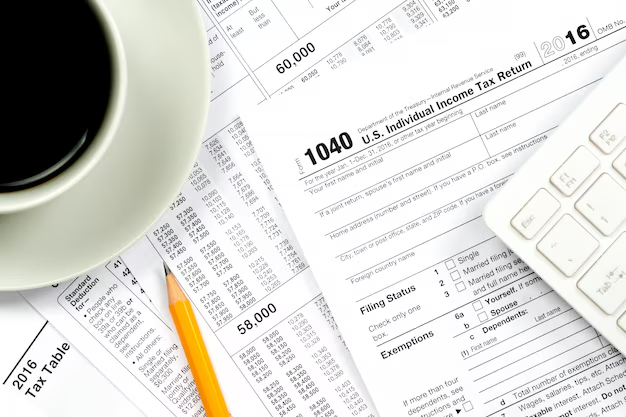How Are Ordinary Dividends Taxed? A Comprehensive Guide
If you've ever received a dividend payment from a stock investment, you might have wondered: Are ordinary dividends taxed as income? Understanding the taxation of dividends is crucial for making informed investment decisions and managing your financial portfolio effectively. This guide will delve into the specifics of ordinary dividends, their tax implications, and strategies to optimize your tax obligations.
🎯 Understanding Ordinary Dividends
What Are Ordinary Dividends?
Ordinary dividends are the most common type of dividend companies distribute to their shareholders. These are typically distributed from the company's earnings and profits. Unlike qualified dividends, which are taxed at a lower capital gains rate, ordinary dividends are taxed as ordinary income.
How Are They Different from Qualified Dividends?
Qualified dividends enjoy a preferential tax treatment, often taxed at the reduced rates applicable to long-term capital gains. In contrast, ordinary dividends do not meet the specific criteria to be considered "qualified," and therefore, they are subject to the investor's regular income tax rate. This distinction emphasizes the importance of understanding how your dividend income will impact your tax situation.
📊 The Taxation Process of Ordinary Dividends
How Are Ordinary Dividends Taxed?
The tax treatment of ordinary dividends means they are added to your total taxable income for the year. Simply put, these dividends are subject to the same tax rates as your salary or wages. Let's explore the key steps in this taxation process:
Receiving Your 1099-DIV Form: At the start of each tax year, if you've received dividends totaling over a certain amount from a company, you will receive a 1099-DIV form. This document summarizes your total dividend income, showing both ordinary dividends and qualified dividends separately.
Reporting on Your Tax Return: When filing taxes, you must report the dividends on your tax return under ordinary income. This amount will then be taxed at your corresponding income tax rate based on your total earnings.
Tax Rates: Ordinary dividends are taxed at rates ranging from 10% to 37%, depending on your taxable income and filing status. Understanding where your income falls under current tax brackets allows you to anticipate your tax obligation on ordinary dividends.
A Quick Look at Current Tax Brackets 🧮
| Income Range | Tax Rate |
|---|---|
| $0 - $9,950 | 10% |
| $9,951 - $40,525 | 12% |
| $40,526 - $86,375 | 22% |
| $86,376 - $164,925 | 24% |
| $164,926 - $209,425 | 32% |
| $209,426 - $523,600 | 35% |
| $523,601+ | 37% |
(Note: Income brackets might differ based on filing status and yearly tax updates. Check current IRS guidelines for the most accurate details.)
🧐 Factors Influencing Dividend Taxation
Impact of Personal Tax Situation
Your personal tax situation plays a crucial role in how dividends are taxed:
- Other Sources of Income: Consider your total earnings from other sources, such as a salary, rental income, or other investments. A higher overall income can push you into a higher tax bracket, thus affecting the rate at which your ordinary dividends are taxed.
- Filing Status: Whether you file as a single individual, jointly with a spouse, or as a head of household can alter the applicable tax rate.
- Tax Deductions and Credits: Various deductions and credits might reduce your taxable income, potentially lowering the tax rate for your ordinary dividends.
The Role of Tax-Deferred Accounts
Holding investments in tax-deferred accounts such as IRAs or 401(k)s means dividends can accumulate without incurring immediate taxes. This advantage can be a strategic part of minimizing annual tax liabilities. However, taxes apply when you withdraw these amounts during retirement, aligning with your then-current tax rate.
💡 Strategies for Managing Dividend Taxes
Strategic Dividend Management
Investors often employ strategic management to optimize dividend income taxation:
- Allocate Investments Wisely: Consider placing dividend-generating investments in tax-sheltered accounts or balancing such investments with those in taxable accounts for greater control over your yearly tax situation.
- Timing Withdrawals/Investments: Planning when to invest in or withdraw from dividend stocks can also impact tax liabilities. Monitor your income carefully against the tax year calendar to maintain awareness of tax obligations.
Explore Qualified Dividend Options
While optimizing investments in ordinary dividends, you might also explore opportunities to shift towards qualified dividends, when feasible. Ensuring stocks meet the necessary criteria (e.g., holding periods) could result in potential tax savings through reduced rates.
🌟 Key Takeaways
Here's a concise summary to guide your understanding of ordinary dividend taxes:
- Ordinary dividends are taxed as income, subject to your regular income tax rate.
- Stay informed: Receiving and accurately reporting the 1099-DIV form is essential.
- Tax brackets impact your dividend tax rate; plan dividends alongside other income sources.
- Utilize tax-deferred accounts for strategic tax management.
- Consider structuring investments for qualified dividends where possible.
Utilize this knowledge to navigate dividend taxation effectively, align your investment choices with your financial goals, and keep abreast of opportunities for tax optimization. Understanding the landscape of dividend income and taxation will empower you to make informed financial decisions, turning potential tax burdens into strategic advantages.
